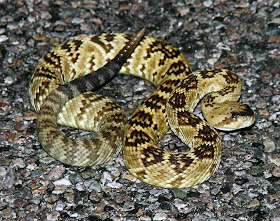 One of the things I always try to do is collect some frames and make a time-lapse "live" in front of the group. Lately I've taken shots of the sunset thru a small telescope and make a clip out of the frames, but unfortunately, on Saturday I underestimated the effect of the haze layer when setting the exposure and the frames were a couple stops underexposed... So no new data, but I did get a shot of the sun before it got too low with a few small sunspots. Click on the frame to enlarge - note the little extension at the upper right. It was low enough that layers in the atmosphere was affecting the limb of the sun as it set pretty low in the sky.
One of the things I always try to do is collect some frames and make a time-lapse "live" in front of the group. Lately I've taken shots of the sunset thru a small telescope and make a clip out of the frames, but unfortunately, on Saturday I underestimated the effect of the haze layer when setting the exposure and the frames were a couple stops underexposed... So no new data, but I did get a shot of the sun before it got too low with a few small sunspots. Click on the frame to enlarge - note the little extension at the upper right. It was low enough that layers in the atmosphere was affecting the limb of the sun as it set pretty low in the sky.After the sun had set I also took a few frames of the Moon. The scope used for both of these frames was the "new-to-me" TEC 140, which gives a nice image scale with the nearly 1,000mm focal length. Even though I wasn't tracking, the thousandth of a second exposure needed for the moon froze the Earth's rotation and Moon's apparent motion. The image is cropped and kept near the maximum image size so the fine details in the craters can be seen.
The rest of the evening was uneventful. We spent time shooting wide-angle tracked shots, as well as exposures through the TEC 140 mounted piggyback on the telescope we had at our disposal. We also had classroom sessions on data manipulations once the images were collected. We took a night lunch break, and while the students went back up to the telescope, I headed back to Tucson about 11pm. You always have to be on the lookout for wildlife on the drive down the mountain at night. Over the years I've seen everything from mountain lions to bobcats, skunks to ringtail cats. Usually over the Summer snakes can be seen on the asphalt as the pavement retains heat into the evening, but haven't spotted any on my trips for ages.
More lucky this time, rounding a corner, I saw this 3.5 foot (1 meter) rattlesnake stretched across the road. I stopped quickly as I passed it and backed up to image it. The temps were in the upper 50s and it was moving very slowly, so was easy to grab a couple frames. Mostly he wanted to get away from me, and after coiling briefly for this picture (with on-camera flash), he took off for the edge of the road, as I headed back down the mountain. I searched Google images for an identification and my snake expert confirms my guess of a black-tailed rattlesnake, from the black patch on its snout and dark tail. When I had arrived on the mountain earlier, the visitor center staff alerted me that someone had spotted a mountain lion near the top, and another had seen a coral snake, though more likely a king snake given that the reported size was nearly 2 feet long (60cm). So yes, wildlife proliferates even in the wilds of the National Observatory!


No comments:
Post a Comment
We value your comments, but no spammers, please!